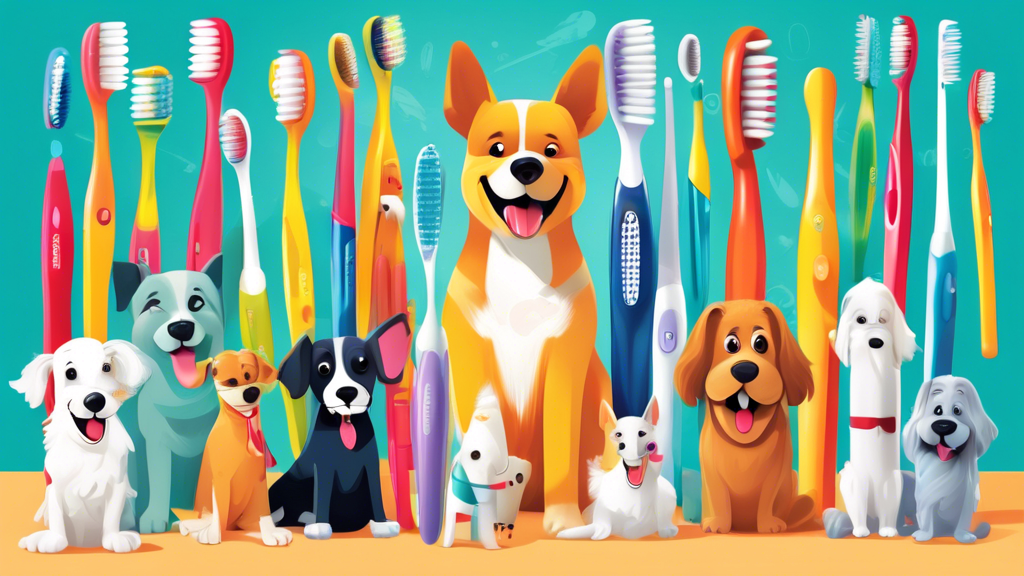Introduction
Maintaining your dog’s dental health is just as crucial as looking after their diet or exercise routine. One essential component of this care is choosing the right toothbrush. With the market flooded with numerous options, selecting the best toothbrush for your furry friend can be overwhelming. This guide will help you navigate the options and find the best tool to keep your dog’s teeth clean and their gums healthy.
Understanding the Importance of Dental Care for Dogs
Before diving into the specifics of toothbrushes, it’s vital to understand why dental care is so important for dogs. Just like humans, dogs can suffer from dental issues like plaque buildup, tooth decay, and gum disease. These problems can lead to more severe health issues if not addressed. Regular brushing helps remove plaque, control tartar buildup, and reduce the risk of dental diseases. Moreover, it also helps in spotting any potential dental problems early.
Types of Dog Toothbrushes
Several types of toothbrushes are designed specifically for dogs, each with its advantages and unique features. Understanding these options can help you make a more informed decision.
Traditional Dog Toothbrush
These resemble human toothbrushes but are specifically designed for dogs. They often have softer bristles and a longer handle, making it easier to reach all areas of your dog’s mouth. Some have angled heads to better fit a dog’s mouth.
Finger Toothbrushes
Finger toothbrushes are small, rubber caps that fit over the tip of your finger, equipped with bristles on one side. They allow for more controlled and gentle brushing, making them an excellent choice for small dogs, puppies, or dogs unfamiliar with the process of brushing.
Double-Sided Toothbrushes
These toothbrushes feature a head at each end, typically of varying sizes to accommodate dogs of different sizes or to reach different areas of the mouth more effectively. They can be a versatile tool in your dog’s dental care routine.
Electric Toothbrushes
Electric toothbrushes for dogs function similarly to those for humans, providing an oscillating or vibrating brush head. While they can be highly effective, it’s important to gradually acclimate your dog to the noise and sensation.
Choosing the Right Toothbrush for Your Dog
When choosing the best toothbrush for your dog, consider the following factors:
- Size and Breed: Make sure the toothbrush is the right size for your dog’s mouth. Smaller breeds will require a smaller toothbrush, while larger breeds need a toothbrush with a bigger head and longer handle.
- Bristle Hardness: Always opt for soft bristles to avoid damaging your dog’s gums. Soft bristles are effective at removing plaque without causing discomfort.
- Comfort and Ease of Use: Choose a toothbrush that you find easy and comfortable to use. Comfort for your dog is important, but if it’s difficult for you to handle, you may avoid using it.
- Your Dog’s Preferences: Some dogs may prefer one style of toothbrush over another. Pay attention to how your dog responds to brushing and be willing to try different options until you find one that works for both of you.
Introducing Your Dog to Toothbrushing
For many dogs, being introduced to toothbrushing can be a strange and uncomfortable experience. Start slowly, allowing your dog to smell and inspect the toothbrush and toothpaste. Gradually work your way up to brushing a few teeth at a time, always using positive reinforcement. It may take patience, but eventually, your dog should become more comfortable with the process.
Conclusion
Choosing the right toothbrush for your dog is a critical step in maintaining their dental health. By considering the size and breed of your dog, the softness of the bristles, and your dog’s comfort with brushing, you can select a toothbrush that will keep your furry friend’s teeth clean and healthy. Always introduce dental care gradually and with positive reinforcement to ensure a positive experience for your dog.

